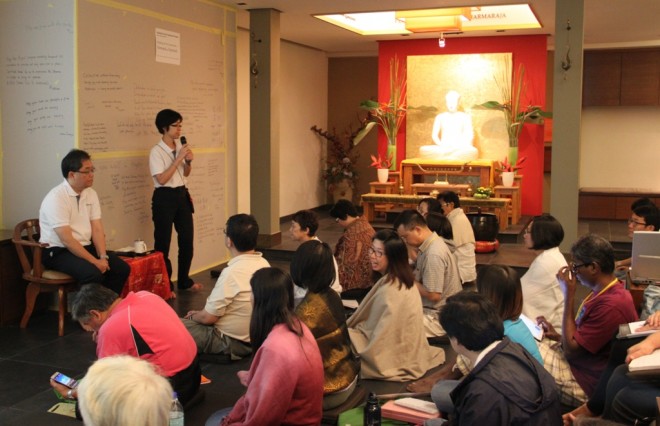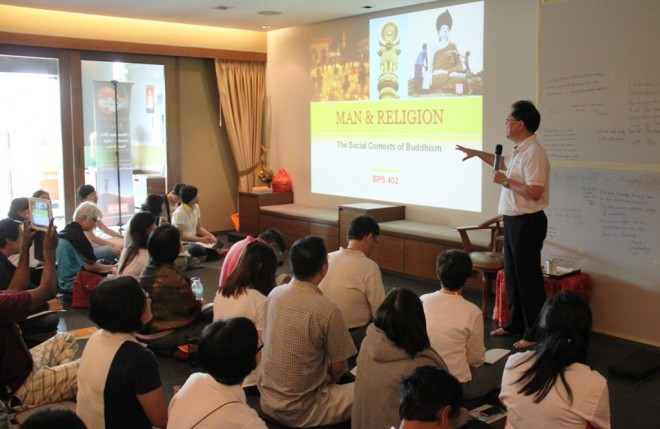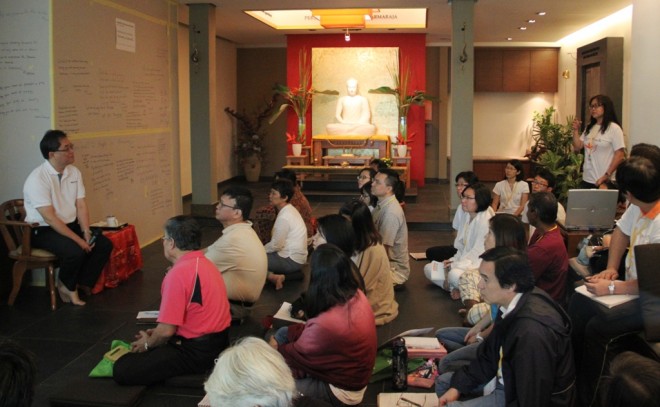BPS402 Lecture 8 – “Humanity & Sociology”
BPS402 Lecture 8 – “Humanity & Sociology”
On 11 October, students of BPS402 Higher Certificate in Buddhist Studies attended Lecture 8 after returning from a fruitful and enjoyable study tour to Bujang Valley a week before. Achariya Tan Siang Chye explained the Indian social context and political structures that existed during the Buddha’s time.
In 6th Century BCE, ‘India’ composed of many independent states known as ‘mahajanapada’, of which four became powerful at the time of the Buddha; they were Magadha, Kosala, Vatsa, and Avanti. Important and progressive changes which assisted the propagation of Buddha’s teaching during that time were urbanization, economic development, political unification, and royal patronage. On the social front, the Buddha boldly and revolutionarily rejected the caste system prevalent at that time.
Achariya mentioned the five conditions for the appearance of Buddhas, i.e. (1) being the appropriate time; (2) appropriate land/country; (3) appropriate family (to be born into); (4) appropriate mother; and (5) appropriate (current) lifespan of humans.
Students were appreciative of the wealth of knowledge Achariya shared on the social landscape during the early Buddhist era, and are eagerly looking forward to the next lecture.

Head of Department for Buddhist & Pāli Studies, Sis. Sandy Lim, giving updates on the group assignment.



